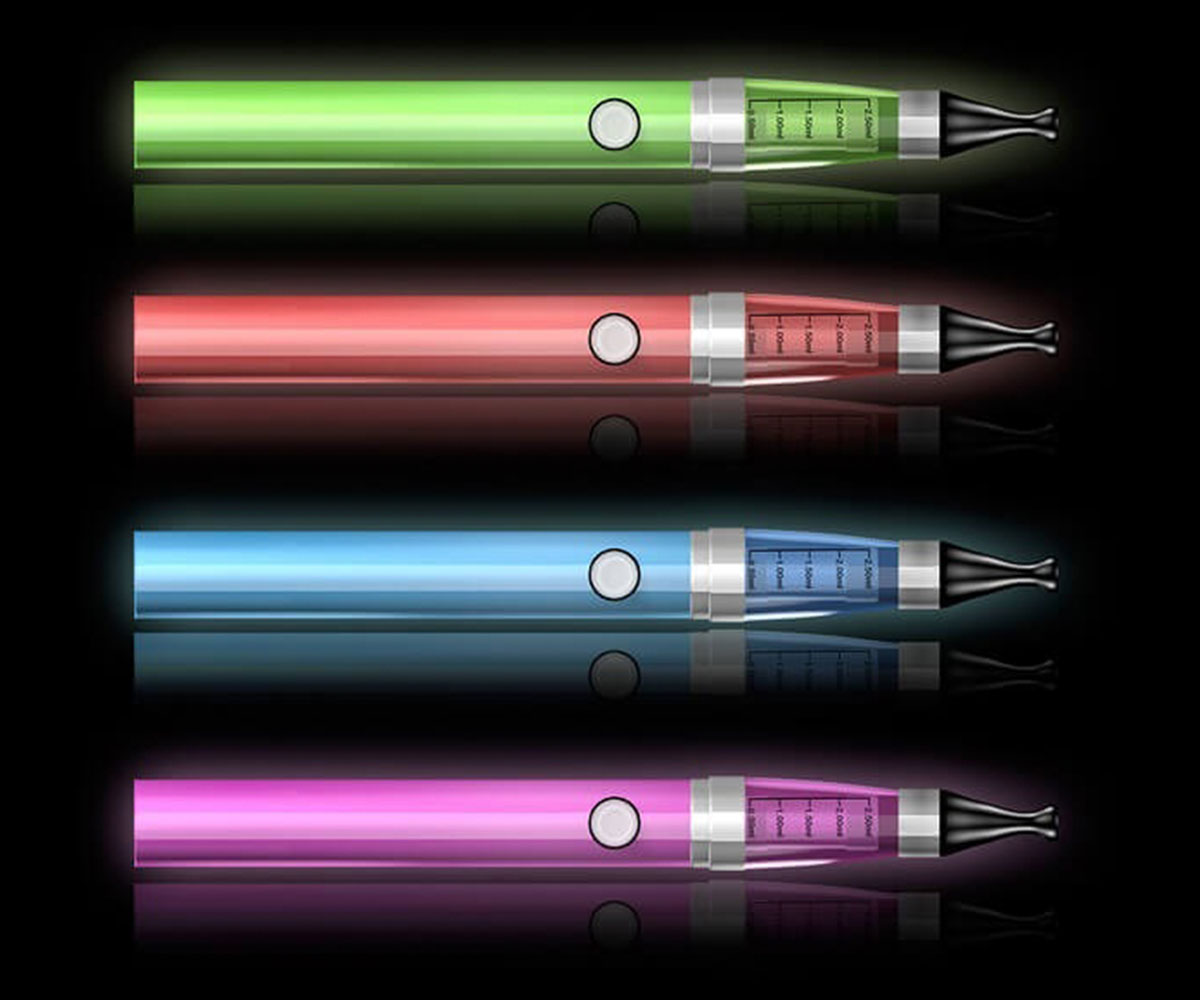

While many e-cigarettes resemble traditional tobacco cigarettes, cigars, and pipes, some are also made to look like USB memory sticks or pens. They also come in flavors like vanilla, strawberry, cherry, and cookies and cream. Although they don’t contain tobacco, they are still considered a tobacco product by the Centers for Disease Control (CDC).

The use of traditional cigarettes among teens decreased from 15.8% to 9.2% between 2011 and 2014. However, the increased use of e-cigarettes contributed to an estimated 400,000-person increase in the use of any tobacco product last year.

Puffing on the e-cigarette activates the battery-powered heating device and vaporizes the liquid, which is then inhaled (this is called “vaping”).

E-cigarettes deliver nicotine without burning tobacco, so the user doesn’t inhale the same amount of chemicals and carcinogens as they would from a conventional cigarette. E-cigarettes also don’t contain the tar that is responsible for most lung cancers. They appear to be a safer, less toxic alternative to conventional cigarettes.
Although any adverse health effects caused by long-term use of e-cigarettes have not yet been proven and need to be studied, e-cigarettes still contain nicotine, a highly addictive drug derived from tobacco, and other potentially harmful chemicals. According to NIDA, testing of some e-cigarette products found the vapor to contain known carcinogens and toxic chemicals, including formaldehyde and acetaldehyde, as well as potentially toxic metal nanoparticles from the vaporizing mechanism. In addition, there is a concern that e-cigarette use may serve as a “gateway” product to try other tobacco products, including conventional cigarettes.

The Federal Drug Administration (FDA) currently regulates cigarettes, cigarette tobacco, roll-your-own tobacco, and smokeless tobacco. They have proposed to extend its tobacco authority to additional tobacco products, including e-cigarettes. The proposed rule would require health warnings, a minimum age and identification restriction to prevent sales to underage youth, and prohibition in vending machine sales unless in a facility that never admits youths.

- Start talking to your children about the dangers of smoking when they are around 5 or 6 years old, and continue through their high school years. Many kids try smoking by age 11, and can become addicted by age 14.
- Tell your children honestly and directly that you don’t want them to smoke. Explain the health dangers, as well as the unpleasant side effects such as yellow teeth and nails, and bad breath.
- Set a good example by not smoking, and implementing a no-smoking policy in your household.
- Know if your children have any friends that smoke, and talk to your kids about ways to refuse a cigarette.
- If you catch your teen smoking, avoid any threats or ultimatums. Find out why she is smoking — because of peer pressure? Is she trying to get your attention?
- Explain to your child how tobacco companies spend billions of dollars each year to target and manipulate people into buying their products. From glamorizing them in movies and commercials to adding candy-like flavors, help her understand it’s all designed to get her addicted to their product.
Find more information on teens and smoking, including tips to help your teen quit if she has already started.





